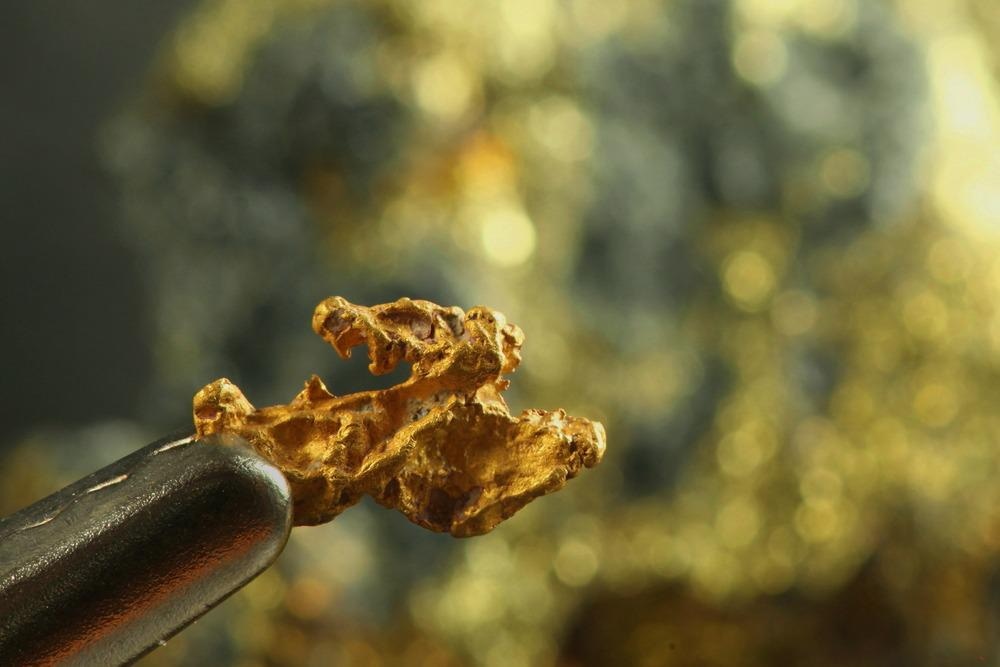Most consumers are unaware of the environmental impact of gold production, but around 20 tons of waste are generated in order to produce enough gold for just one wedding ring. Now, a team of researchers in the Journal of Cleaner Production. have developed a novel green method for copper recovery from acidified sediments (ASs) in the gold industry.

Study: A novel green method for copper recovery from cuprous thiocyanate-containing acidified sediments in the gold industry. Image Credit: Henri Koskinen/Shutterstock.com
As a whole, the global gold industry produces significant amounts of waste streams that contain cyanide, copper, zinc, and other heavy metals. These waste streams are typically acidified sediments that contain Copper(I) thiocyanate (CuSCN) and can pour into the natural environment posing a risk of creating a potentially toxic environment.
“The disposal of ASs in environmental settings occupies the land of plants, posing severe secondary pollution to public health and aquatic organisms,” explains study co-author Qing Han of the School of Metallurgy, Northeastern University, Shenyang, China.
Copper toxicity in soil inhibits the mineralization of key nutrients and can enter the food chain as well impacting the health of animals feeding in contaminated ground. Additionally, an excess of copper entering waterways can also have an adverse effect on aquatic life as copper damages the nervous system of most fish.
Therefore, developing new, low-cost green strategies for the recovery of materials such as copper from waste generated by the industry is considered to be an extremely important objective: “This study provides a feasible environmentally-friendly strategy for the efficient copper recovery from ASs, thus realizing the reduction and utilization of ASs in gold plants,” says Han.
Han and his team developed an effective and environmentally-friendly hydrometallurgical process, consisting of thiosulfate leaching and protective electrodeposition, for selective copper recovery from acidified sediments.
Cyanidation
Presently, cyanidation is the most commonly used leaching process in gold production and the production of reagents for the recovery of metals in mineral processing – making up around 13% of global cyanide consumption.
However, due to the toxicity and poisonous nature of cyanide it is considered a controversial practice and even banned in a number of countries. There have even been a number of incidents involving cyanide which have even sparked protests of its continued use in the industry.
Furthermore, the leaching period of cyanidation usually takes up to 24 hours in gold processing and recovery applications. Thus, alternative lixiviants for use in the gold industry have received more and more attention in recent years.
Thiosulfate Lixivant
While there is relatively little information published regarding the application of using thiosulfate lixiviant to leach copper from gold it is considered to be an attractive alternate reagent to cyanide in gold processing.
Relatively inexpensive and nontoxic, thiosulfate as green and cheap lixiviant has also attracted significant attention in the extraction of precious metals from other minerals, printed circuit boards (PCBs), and spent catalysts.
Green Graphene-Gold Nanocomposite: Superior Antioxidant Activity
In the study, published in full in the Journal of Cleaner Production, the researchers combined thiosulfate leaching with electrodeposition, a process that assembles solid materials from molecules, ions, or complexes in a solution.
This method proved effective for the recovery of metal copper from acidified sediments. What’s more is that the energy of consumption was as low as 1.25 kW h/and generated 95% copper recovery. Additionally, the team was also able to realize the selective separation of zinc using the same process.
Furthermore, the team also stated that the generation of Na2Zn3 [Fe(CN)6]2 played a vital role in copper leaching and adding sulfites suppressed decomposition of the thiosulfate: “It can be concluded that the addition of sulfites is favorable for the stability of electrolytes for electrodeposition process,” explained Han.
The technique developed by the researchers also showed favorable results in terms of timescales as under optimal conditions 95% copper recovery can be achieved in just 480 minutes, outperforming the cyanidation process.
As an alternative method for copper recovery from acidified sediments and CuSCN-containing wastes, the approach developed by Han and his team demonstrated promising results that limit environmental impact: “This approach can effectively avoid the production of toxic gases and subsequent separation of metals in pyrometallurgy and the problem of selectivity and remnant cyanide of leaching residue in cyanidation process. Says Han.
Having successfully demonstrated a low-cost and green copper recovery method, the team acknowledged that further work was required to consider the separation process of SCN– from the leachate and also a method to effectively recycle the thiosulfate solution to further reduce costs.
References
Mingxin Li Binchuan Li Jianshe Chen, Xiaoyi Shen, Shuang Cui, Kuiren Liu, & Qing Han. ‘A novel green method for copper recovery from cuprous thiocyanate-containing acidified sediments in the gold industry’. Journal of Cleaner Production. Volume 329, 20 December 2021: https://www.sciencedirect.com/science/article/pii/S0959652621039068?via%3Dihub
Disclaimer: The views expressed here are those of the author expressed in their private capacity and do not necessarily represent the views of AZoM.com Limited T/A AZoNetwork the owner and operator of this website. This disclaimer forms part of the Terms and conditions of use of this website.